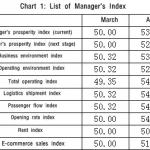What Fiber Modifications Can We Expect to Find in the Near Future?
Kornelia Nehse
Institute of Forensic Science Berlin, LKA KT 45, Germany
Abstract : Textile industries in Europe and the US struggle against cheap t extile imports from Asia or Eastern Europe. The products can be sold very cheap and are distributed all over the world. The future of the European and US Textile and Apparel Industry depends on highly specialized products with added values. The textile industry develops advanced fiber types which are already available or will be available in the near future and can compete on the market. This will also have some influence in forensic fibers investigations. “Smart Clothes” and “Intelligent Textiles” are catchphrases but what can we expect to find behind these slogans and how can we determine new fiber types in forensic investigation? Especially the identification of nano-particles and nano-composites is a task for the forensic scientist. The question how and if the forensic scientist has to develop more refined techniques to identify these specialized textiles and fiber types is highlighted.
Introduction
Textile production was and is a very traditional process which follows certain rules since a very long period of time. Nowadays natural and man made fibers are equally used for the production of clothes and other textiles and therefore found in casework. Over the last few years the situation in textile industries changed due to several influences. Sharing knowledge with various industrial sectors improved the outcome of new solutions. Joint collaboration obtained better results. Namely the general developments in nanotechnology (1, 2) gave some new input regarding new fiber types with added values.
The nanoparticles are ranging from 1 to 100 nanometers and mainly are created to add special functions or modify the fiber functions. So called “Intelligent Textiles” or “Smart Clothes” (3) represent the next generation of fib ers, fabrics and ready made products which have an added value regarding the textiles basic functions. As basic functions protection, warmth and coverage can be described. Furthermore there are values like group characterization and status due to fashion, color and marketing effects.
Added values like new functionalities partly result from research carried out in other fields then textile industries. The textile industry benefits greatly from these external results. The new fibers generation will add values in a sense that textile materials can “think” to refine basic functions like protection. The same textile materials shall keep us warm in cold environments and keep us cool in warm environments. The fast development of intelligent textiles is also due to the needs in the military industry. The before mentioned protective and regulating functionalities are needed there in the same way then textiles with improved camouflage effects.
Governments invest in Research and Development and the beneficial effect for the textile industry is that companies can make use of various new developments and influence other areas rather then to simply adapt only ready made solutions to their products. A new strategy is to look for external partners and to create completely new solutions via teamwork and cooperation in a joint venture with other technologies. This , for the textile industry, new way of thinking leads to co -operation between material sciences, engineering, chemistry, design, process development and clothing physiology and will not only influence our work in forensics in the fibers section over the next years.
Our life is also dominated by communicational and other technical devices. This is another focus regarding textiles and an increasing number of solutions will be implemented in textiles and clothing over the next years as for communication purposes and as wearable biofeedback systems. The focus of this paper is clearly on fibers and fiber developments which will affect our routine investigation and will give an impression how to plan ahead.
A considerable development started over the last years in the area of functional textiles like sportswear and outdoor cloth es to address the extended needs for protection and humidity transport. These systems were mainly based on modified fib er types and textile layers with capillary functions. The aspect which will affect us most in future is the implementation of nano-partic les and nano-coatings.
Materials and Methods
The most important and developing intelligent materials at present are phase change materials, shape memory materials, temperature sensitive shape memory polymers , chromic materials and conductive materials for solar or electrical purposes.
Very often nature offers effects and systems which can be transferred with the help of modern techniques (design and engineering systems ) into new technical solutions. This method is called Bionics or Biomimetics (4, 5, 6).
One of the most commonly known effects is the so called lotus effect. This plant developed a surface system where dirt particles are rinsed off by moving water drop lets as a method of self cleaning.
Regarding solutions with nanomaterials much depends on the compatibility with the fiber material. Wet Chemical Processes, M echanical processes, Form-in-place processes and Gas Phase Synthesis are used. Via these methods a wide range of properties can be offered including conductivity, magnetism, piezoelectric effects, colo r changes, water repellence and anti-microbial effects.
The processes control the surface chemistry and nanomaterials can be incorporated into the fibers or bound to the surface including ultra fine coatings . The particles e.g. can be of polymeric or metallic origin. Different methods are guarded closely by the companies and more and more solutions will be found in the market.
The durability of the particles, layers and coatings depends extremely on the type of material, and the kind of fixation or incorporation. Fiber investigation in its first steps is routinely carried out with the help of low power microscopy, brightfield, polarized light and fluorescence microscopy normally up to a 1000 x magnification.
FTIR spectroscopy, UV/VIS-Spectroscopy or VIS-Spectroscopy in addition with TLC follow as routinely used analytical methods . Different other methods are on offer and normally used for specific purposes.
Results :
In Forensics one of the main problems in identifying the before mentioned particles or coatings on or in fibers is the limitation of perception using brightfield microscopy. The particles used are between 1 and 100 nm and therefore beneath the perception limits of a brightfield microscope. Magnifications of 400 or 1000 times can sometimes offer a faint clue that there might be some alterations on or within the fibers but it needs a trained eye to detect these hints in form of fissures or clefts which is not possible in any case.
The use of dark field and or fluorescence may sometimes give some additional information regarding the presence of those materials. The use and of an SEM allows to get information about the presence of particles and/or coatings and the morphological features.
Conclusion/Discussion :
As a means for the detection of nanoparticles brightfield microscopy only is no sufficient solution since nano -particles, coatings and implementations can not be detected properly in 400 or 1000 times magnification. Nevertheless fibers microscopy with high magnifications can offer some clues which leads to the consequence that the expert has to go into further detail.
There is a need to look for other means to determine the presence of the particles and to identify the particles themselves. The use of dark field and fluorescence microscopy might help under certain circumstances to get some first ideas regarding the presence of particles.
The use of refined methods like SEM/EDX, FTIR, HPLC seems to be appropriate but we have to address this problem in further detail to get more information about the limitations of these systems to detect the possibly low amount of material within or on the fibers surface. The materials are not on the market in huge amounts at present but the development is well on its way. The Forensic Fibers Expert has at least to be aware of this to take precautions and to establish a routine for his analytical case work.
Literature Citations :
- Nanotechnology: A Gentle Introduction to the Next Big Idea, Prentice Hall PTR Upper Saddle River, New Jersey, US, 2003, Ratner, Mark, & Ratner, Daniel
- The Dance of Molecules: How Nanotechnology is Changing Our Lives , Thunder’s Mouth Press, New York, New York, US, 2006, Sargent, Ted
- Intelligent Textiles and Clothing, Woodhead Publishing Limited,Abington Hall, Abington, Cambridge CB1 6AH, UK, 2006, H. Mattila
- Biomimicry for Optimization, Control and Automation, Springer-Verlag, London, UK, 2005, Kevin M. Passino
- Fascination Bionics, The Intelligence of Creation, MCB-VERLAG, Munich, D, 2006, Kurt G. Blüchel and Fredmund Malik
- Bionics, How can technology learn from nature, Fischer Verlag, Frankfurt, D, 2005, Antonia B. Kesel









